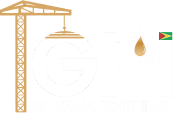Airless Painting
Airless painting offers numerous advantages in terms of speed, coverage, and quality, making it a preferred choice for shipyard painting projects. Here is a description of airless painting in our shipyard:


High-Pressure Application
Airless painting systems utilize a powerful pump to generate high pressure, typically between 2000 to 5000 psi (pounds per square inch). This pressure forces the paint through a small orifice in the spray tip, breaking it into fine droplets without the need for compressed air. The result is a dense spray pattern that provides excellent paint coverage on large surfaces, such as the hull of a ship.

Efficient and Fast
Airless painting is significantly faster than traditional paint application methods, such as brush or roller painting. The high-pressure spray allows for a large volume of paint to be applied in a short amount of time, reducing the overall painting process's duration.

Smooth and Uniform Finish
Ships have various tanks, such as fuel tanks, ballast tanks, and cargo holds, that require periodic cleaning. Abrasive blasting is used to remove scale, residues, and old coatings from these tanks, ensuring they are in optimal condition for their intended use.

High Transfer Efficiency
Airless painting systems boast high transfer efficiency, meaning a significant percentage of the paint is deposited onto the surface, reducing paint wastage and making the process cost-effective.

Suitable for Various Coatings
Airless painting can handle a wide range of coatings, including primers, paints, varnishes, and protective coatings. It is particularly effective in applying high-build coatings that require a thick application for proper protection.

Versatility
Airless paint sprayers can be used on various surfaces and shapes, including flat, curved, and irregular surfaces found on different parts of a ship, such as the hull, decks, superstructure, and tanks.

Reduces Labor Intensity
With airless painting, the need for manual labor is reduced compared to traditional methods. It allows shipyard workers to cover large areas quickly and efficiently, freeing up time for other essential tasks.

Safety Precautions
Although airless painting is efficient, it generates overspray, which can be a safety concern. Adequate ventilation and the use of personal protective equipment (PPE) by workers are essential to protect against inhalation of paint particles and overspray.
